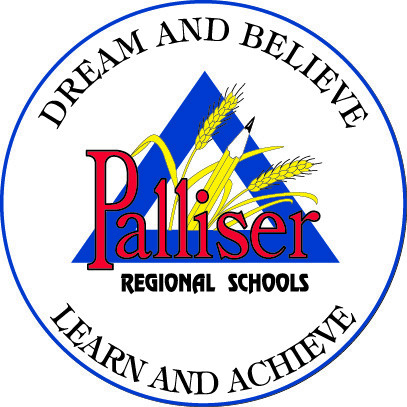
The principals and vice-principals of Palliser Regional Schools will work with and learn from some of the region’s top literacy and assessment experts for four full days of professional development this year. The experts are Palliser’s own principals and VPs.
The 40 school leaders will gather Monday on the first of Palliser’s division-wide collaboration days to discuss “Literacy and Assessment for Learning: A Collaborative Approach for Growing Your School.”
It’s the first time all principals have united in a single professional learning group. In previous years, they may have united in smaller groups as elementary or high school leaders. Others may have joined fellow teachers with common subject expertise.
Associate Superintendent (Human Resources) Ken Garinger, who is helping to organize the new collaborative group, said this is a new and exciting opportunity to deepen Palliser’s focus on instructional leadership, literacy and assessment, which Palliser deems are key to student success.
“The numbers show that people have a need and desire to learn from one another,” Garinger said. “We know the questions are in the room, and so too are the answers.”
Palliser devotes four division-wide professional development days to giving teachers time to work with their colleagues from other schools in the division. The focus of each group’s work is generated by one teacher who then welcomes any other teachers from across the division to join. The groups will meet Monday when teachers converge on County Central High School in Vulcan. They’ll have three more collaborative days through the rest of the year.
Each of 50 or so small learning groups is focused on literacy or assessment for learning, but the groups might focus on a particular subject, course or grade. Superintendent Kevin Gietz says having teachers from different schools work together brings fresh ideas and new viewpoints to the group’s work, and strengthens the sense of team in the division.
The 40 school leaders will spend Monday creating a plan for their collaboration time, starting with an “open spaces” approach that gives members opportunity to put forth the ideas most important to their professional growth, Garinger says. The approach takes advantage of what’s been called “the wisdom of the group.”
School leaders work together often as Palliser’s Administrators’ Association holds regular meetings through the school year that provide the principals and vice-principals time to discuss common issues and concern.
Bringing together so many school leaders on collaboration days is “a significant step” in the evolution of the teamwork and growth that began at those Administrators’ Association meetings, says Vulcan Prairieview Elementary School Principal and former admin association chair Shane Cranston. Cranston was part of a committee that developed a three-year professional development plan for the association, focused on the role of the principal as the instructional leader of the school. The plan saw members sharing tools and best practices for coaching teachers, observing teachers in the classroom and providing meaningful feedback.
“It’s the fact you can talk and work with people who see the same things as you every day,” Cranston said of the value of this collaboration. “We share research and there’s shared knowledge and shared vision.”
He said the division collaboration days bring tremendous value to teachers, particularly those at small schools.
“When you’re the only Grade 3 teacher in the building, it’s a lot harder,” Cranston said, of professional isolation. “It used to be we called schools ‘islands.’ Now, working together is huge.”
Garinger said Palliser’s Leadership in Literacy Symposium, attended by Central Office administrators and school leaders last October, was an example of the power of collaboration at the principal and vice-principal level. All of the sessions were led by Palliser’s own experts.
“The literacy symposium came from within,” Garinger said. “The knowledge is in the room. Now we’re moving forward and building on that success.”
Palliser adopted assessment for learning even before it embraced literacy, but Garinger says the two go hand in hand. The division’s literacy program relies on individual assessment of each student’s reading skills. Once the teacher knows the student’s reading abilities, he/she also knows what instruction must follow in order to move the student forward.
Garinger describes assessment for learning as a system of accountability for students, providing them multiple and varied opportunities to demonstrate what they’ve learned and to learn from mistakes they’ve made. Students and teachers work together to identify the end result or key learnings and to map out how the student will reach that destination.
With collaboration day on Monday, Sept. 15, students across Palliser will have a day off, but they can be assured their teachers will be working and learning.

